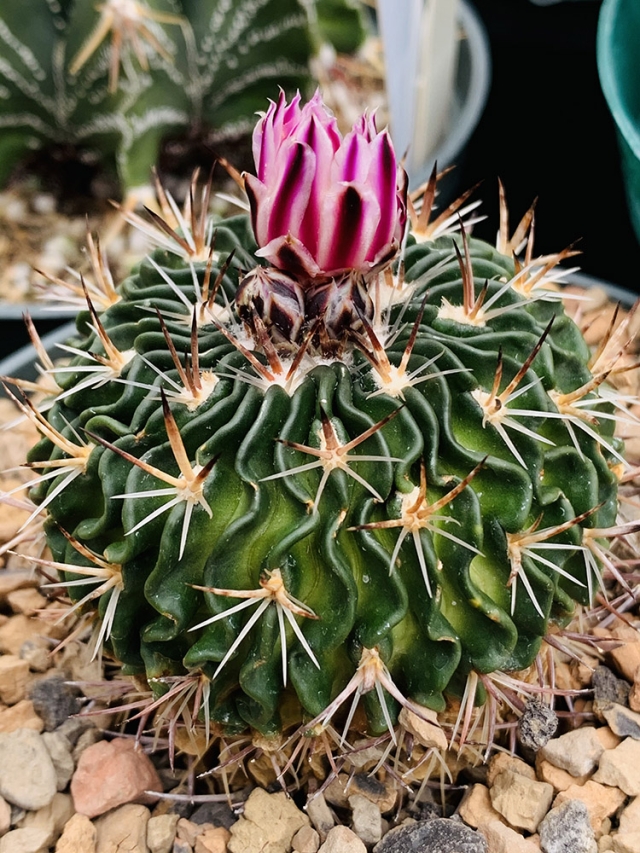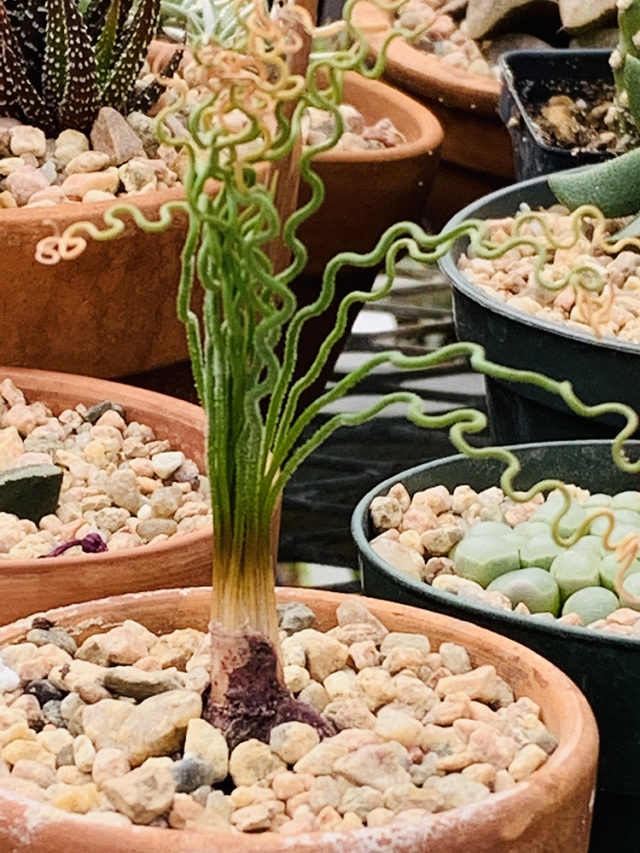Success with Succulents
Succulent plants have fascinated gardeners for many decades, and this trend shows no sign of slowing. There are many attributes that make them a great choice for Denver, and although delving into growing them can be frightening, I’m here to give you the 411 on making them thrive as you impress your friends and neighbors.
Let’s go over a few definitions and ground rules. Technically speaking a succulent plant is any plant that has ability to store water for later use. Generally, they want a lot of light and a little water. I know, easier said than done. For me, keeping the Gardens’ indoor collection of succulent plants from around the world requires diligence, attention to detail and of course, my trusty old crystal ball.
Here are some tips to keep your plants healthy and happy. Keep in mind these are generalizations; not meant to take the place of looking up individual plants for specific details.

Echinofossulocactus multicostatus
Planting Outside
The general timeline that frost-sensitive plants can be grown outside in Colorado is from Mother’s Day to early October. When it’s time for the plants to fledge your nest, they must be carefully acclimated to brighter light or they will scar, burn or worse! One trick is to put them in partial shade under a tree, etc., or under shade cloth. Try to increase the light steadily for about a week.
Containers
Keep it tight, pack it full of plants; it will be easier and prettier. I like pots that are more wide than deep.
Soil
Bottom line: Just make it drain well without too much organic matter. Succulents would much rather have lean, fast-draining soil than that rich chocolate cake you grow your other plants in. There is no one good mix for everything. I take regular bagged topsoil (about 50%) and add ingredients like charcoal, perlite, sand and gravel (other 50%) to “chunkify” it to my liking.
Watering
Best advice I can give: When in doubt, do without. This is and was the hardest thing I struggle not to do, 18 years into collecting. I love succulent plants and I still tie a ribbon around my finger to not love them to death. Plants grown outside, I water thoroughly once per week. The cycle of soil moisture should look something like this: totally wet for one day, medium moisture for 3-4 days and almost totally dry for 2-3 days.
Times of Trouble
Things to look for that will require immediate action are stretching or discoloration. If your once nice, tight, red plant is stretching in every direction and turning green, it needs more light and possibly less water. Rot is another problem you need to act on right away. Pull the rotting plant out of the soil, cut off the rotted portion at least a half inch past the rot. Put rooting hormone on the wound and expose to sunlight for a couple days. Once the wound has sealed place carefully back into soil. Some stems may need to be braced until they grow roots again.

Bulbine torta
Lastly, buy plants from reputable nurseries and garden centers who employ a trained horticulture staff. I guarantee you will get better plants and advice, and the plant will have a name tag! Spend time with your plants and pay attention to changes and they will tell you everything you need to know. Don’t give up even if you kill a few --I sure have, and that’s how I learned to do it right.
This article appears in the June 2021 issue of Life on Capitol Hill.
Add new comment